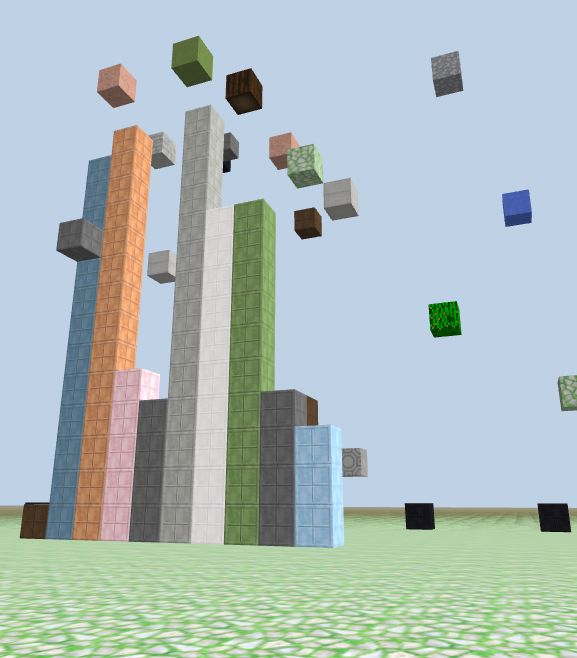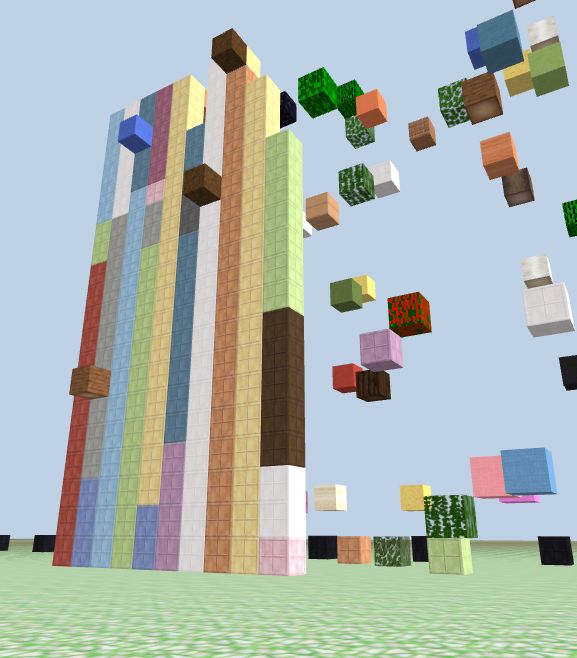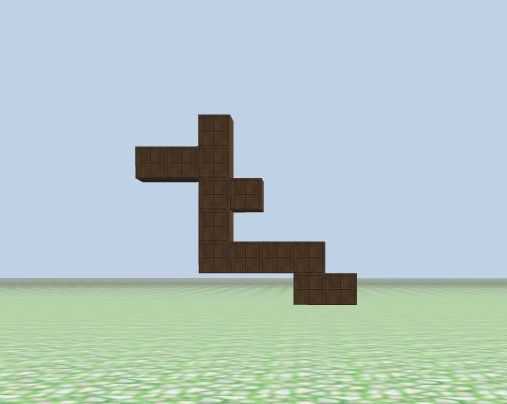randint() in CodeCraft
We use random integers a lot in CodeCraft. The random module has a function called randint() that makes it easy to generate random integers.
To use randint(), we need to import it from the random module. To save typing, we can comment out the line at the very top,import random, and replace it with this line:
from random import randint
Now, let's try using randint() in CodeCraft!
Example 1
Make a list of random integers:
lst = []
for i in range(5):
lst.append(randint(1,20))
print ( lst ) # [12,8,9,15,3]
Each time you run the above code, you should get a different list of numbers.
Example 2: build blocks at random locations with random material
Generating blocks at random locations would be easy with randint(). For example, if you use randint(1, 20) as the input value for the block's x coordinate, the block will show up at random x locations from 1 to 20.
Next, let's generate random materials.
materials is a dictionary in which each material name is paired with a number from 1 to 88, so we can use the numbers from 1 to 88 when choosing the material. Let's use the function block_m(x,y,z,m) for this purpose.
# random x, y, z, m
# 10 blocks with different materials at different locations
for i in range(10):
block_m(randint(1,20), randint(1,20), randint(-20,-10), randint(1,88) )
Each time you run the above code you will get a set of 10 different blocks at different locations.
Example 3: building columns using randint()
You can also generate columns of random materials with random heights. Let's use the function column_m():
for i in range(10):
column_m(i, -10, randint(1, 20), randint(1, 16))
(When I ran example 3, I didn't comment out the other examples and didn't reload the screen, so previous results are in the background.)
Example 3 generated ten random colored columns with random heights between 1 and 20.

Run all the programs a few times and see what you get! Can you explain why some of these columns below have different color segments?

Example 4: random way to go
In this example we will grow a plant, which is really a bunch of blocks "grown" in random directions. A random integer is used to control which way it grows into. 0: left, 1: right, 2: up. (The plant won't grow downwards, because that won't help it survive!)
x = 0
y = 1
for i in range(20):
game.set_block(Position(x, y, -30), 3)
direction = randint(0, 2)
if direction == 0:
x -= 1
elif direction == 1:
x += 1
else:
y += 1
